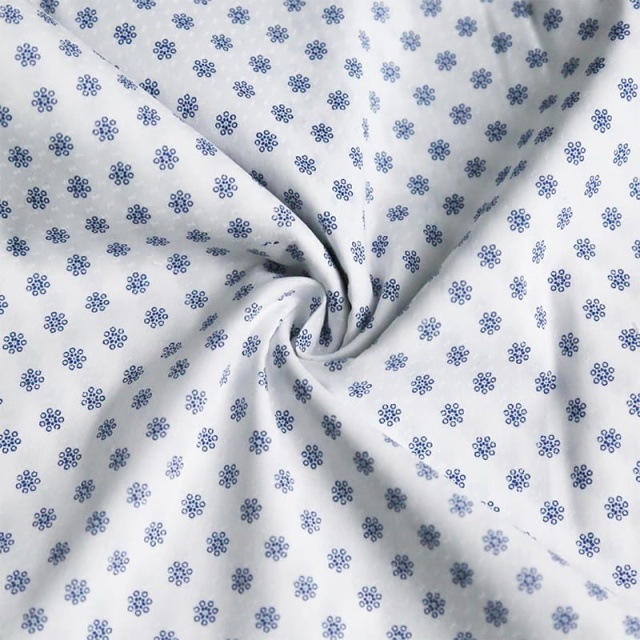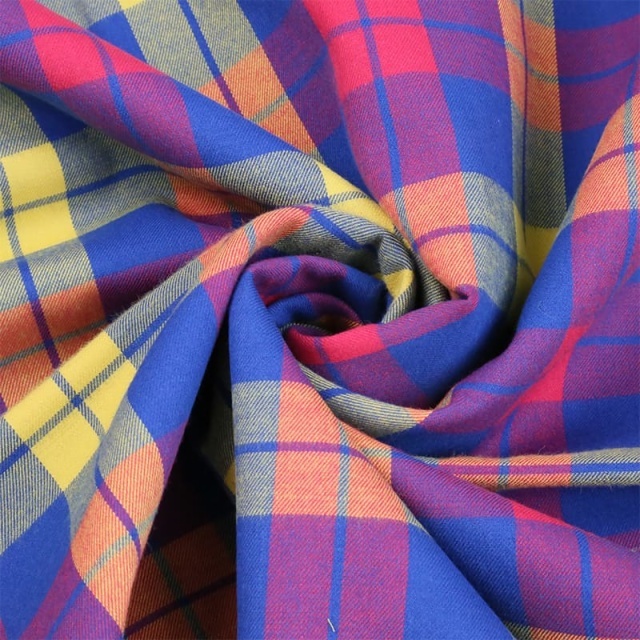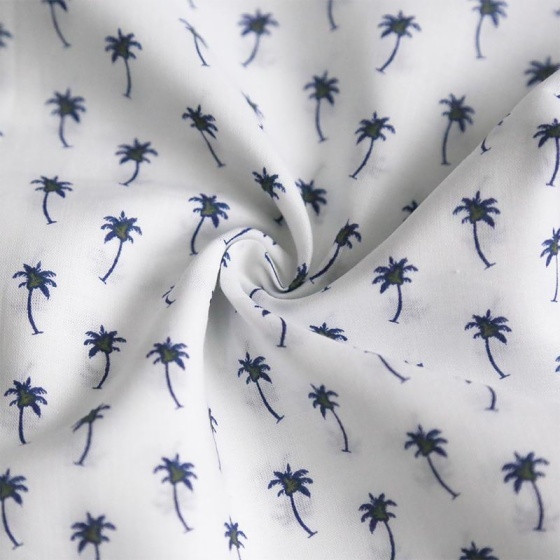The Rise of Digital Printed Fabric: A Sustainable Choice for Modern Textiles
Jun 09,2025
The Rise of Digital Printed Fabric: A Sustainable Choice for Modern Textiles
Table of Contents
1. Introduction to Digital Printed Fabric
2. Understanding Digital Printing Technology
3. The Environmental Benefits of Digital Printed Fabric
3.1 Reduced Waste and Water Usage
3.2 Lower Carbon Footprint
4. Design Flexibility and Customization
4.1 Unique Patterns and Colors
4.2 Short Run Production Benefits
5. Digital Printed Fabric in Fashion Industry
5.1 A New Era for Sustainable Fashion
5.2 Case Studies of Successful Brands
6. Digital Printed Fabric in Home Décor
7. The Future of Digital Fabric Printing
8. Frequently Asked Questions (FAQs)
9. Conclusion
1. Introduction to Digital Printed Fabric
Digital printed fabric represents a groundbreaking advancement in textile manufacturing, merging cutting-edge technology with traditional fabric design. As consumers increasingly demand sustainable practices, digital printing emerges as a viable solution that aligns with eco-friendly values. In our exploration of this innovative textile, we will uncover its myriad benefits, uses, and implications for the future of the textile industry.
2. Understanding Digital Printing Technology
Digital printing involves the direct application of ink onto fabric using specialized printers, allowing for intricate designs and a wider color spectrum. Unlike traditional methods, which often require screen printing or complex setups, digital printing streamlines the process, making it accessible for both large-scale manufacturers and small businesses. This technology utilizes a variety of inks, including water-based and eco-friendly options, further enhancing its appeal within the sustainable textiles market.
3. The Environmental Benefits of Digital Printed Fabric
As awareness of climate change and environmental degradation grows, industries worldwide are seeking sustainable practices. Digital printed fabric stands out due to its efficiency and reduced environmental impact.
3.1 Reduced Waste and Water Usage
Traditional fabric printing methods often result in significant waste, both in terms of unused materials and excess dye. Digital printing minimizes waste as it uses only the required amount of ink, producing minimal off-cuts. Additionally, it typically requires less water, making it a more resource-efficient option.
3.2 Lower Carbon Footprint
The carbon footprint associated with textile production is a pressing concern. Digital printing reduces energy consumption by eliminating the need for multiple processes involved in traditional printing methods. Furthermore, many manufacturers are now incorporating renewable energy sources into their production facilities, further decreasing their overall environmental impact.
4. Design Flexibility and Customization
One of the most exciting aspects of digital printed fabric is its design capabilities. This technology allows for unparalleled flexibility, enabling designers to experiment with patterns, textures, and colors.
4.1 Unique Patterns and Colors
With digital printing, the possibilities are virtually endless. Designers can create intricate, detailed designs that were once impossible with traditional methods. This ability to push creative boundaries leads to truly unique textiles that stand out in a crowded market.
4.2 Short Run Production Benefits
Digital fabric printing is ideal for small production runs, making it a popular choice for independent designers. This aspect allows for quick turnarounds and the ability to respond to changing consumer trends without the risk of overproduction.
5. Digital Printed Fabric in Fashion Industry
The fashion industry has been particularly quick to adopt digital printing technology due to its benefits in creative expression and sustainability.
5.1 A New Era for Sustainable Fashion
As consumers become more conscious of their purchasing decisions, brands are increasingly turning to sustainable practices. Digital printed fabrics offer a solution, allowing designers to create low-impact collections that resonate with eco-conscious shoppers.
5.2 Case Studies of Successful Brands
Several fashion brands have successfully incorporated digital printed fabrics into their collections. Companies like Stella McCartney and Ganni harness this technology to produce stunning, sustainable garments that not only appeal to consumers but also set industry standards.
6. Digital Printed Fabric in Home Décor
Beyond apparel, digital printed fabric has found a niche in home décor. From unique upholstery to custom drapery, the versatility of digital printing allows homeowners to express their style in unprecedented ways. With the ability to tailor designs to individual preferences, consumers can create one-of-a-kind spaces that reflect their personalities while remaining eco-friendly.
7. The Future of Digital Fabric Printing
The future looks bright for digital printed fabric as ongoing advancements in technology continue to enhance capabilities. Innovations such as improved ink formulations, faster printing speeds, and more eco-friendly substrates are emerging. As the demand for sustainable textiles grows, digital printing will likely play a pivotal role in shaping the industry's direction.
8. Frequently Asked Questions (FAQs)
8.1 What is digital printed fabric?
Digital printed fabric refers to textiles that are printed using digital technology, allowing for a wide range of colors, patterns, and designs without the traditional limitations of screen printing.
8.2 How does digital printing differ from traditional printing methods?
Unlike traditional printing, which often requires multiple steps and setups, digital printing directly applies ink onto the fabric, reducing waste and increasing design flexibility.
8.3 Is digital printed fabric environmentally friendly?
Yes, digital printed fabric is generally considered more environmentally friendly than traditional methods due to reduced waste, lower water usage, and the ability to use eco-friendly inks.
8.4 Can digital printed fabric be used for both fashion and home décor?
Absolutely! Digital printed fabric is versatile and can be used in a variety of applications, including clothing, upholstery, curtains, and decorative items.
8.5 What are the advantages of using digital printed fabric in fashion design?
The advantages include design flexibility, the ability to create unique and intricate patterns, and reduced environmental impact, making it appealing for both designers and consumers.
9. Conclusion
In summary, the rise of digital printed fabric marks a significant shift toward sustainability in the textile industry. As innovative technology continues to evolve, so too does the potential for environmentally friendly practices to become the norm. By embracing digital printing, we not only transform the way we design textiles but also take a crucial step towards a more responsible and sustainable future. The path forward is one filled with creativity, opportunity, and a dedication to preserving our planet for generations to come.
More Events
The Rise of Digital Printed Fabric: A Sustainable Choice for Modern Textiles
The Rise of Digital Printed Fabric: A Sustainable Choice for Modern Textiles Table of Contents 1. Introduction to Digital Printed Fabric 2. Understanding Digital Printing Technology 3. The Environmental Benefits of Digital Printed Fabric 3.1 Reduced Waste and Water Usage 3.2 Lower Carbon Footprint 4. Design Flexibility and Customization 4.1 Unique Patterns and Colors 4.2 Short Run Production Benef
Jun 09,2025
Understanding Cotton Dyed Fabric: The Colorful World of Textile Dyeing
Cotton dyed fabric refers to cotton textiles that have undergone a dyeing process to achieve a wide range of colors and patterns. The process typically involves soaking the cotton in a dye solution, which allows the color to penetrate the fibers, resulting in a vibrant and lasting finish. The dyeing methods can vary, including techniques such as reactive dyeing, direct dyeing, and vat dyeing, each
Jun 08,2025
Discover the Boundless Versatility of Printed Cloth Fabric for Your Next Creative Project
Discover the Boundless Versatility of Printed Cloth Fabric for Your Next Creative Project Table of Contents Introduction to Printed Cloth Fabric A Brief History of Printed Cloth Fabric Types of Printed Fabric Available Diverse Uses of Printed Cloth Fabric How to Choose the Right Printed Fabric for Your Project Tips for Working Effectively with Printed Fabric Latest Tre
Jun 07,2025
Do Not Heasite To Contact W&S, Your Comprehensive Solution Provider Now!
We like produce phone cases but we more like to see you earn lots of money by working with us.
Quick Link
Garment
Copyright © Nantong Wang and sheng Textile Co., Ltd. All Right Reserved.

Whatsapp: 008613861954999
Looking forward to your call
Tel: 0086-513-80609999
Looking forward to your call
Email: 1219341304@qq.com
Looking forward to your letter





